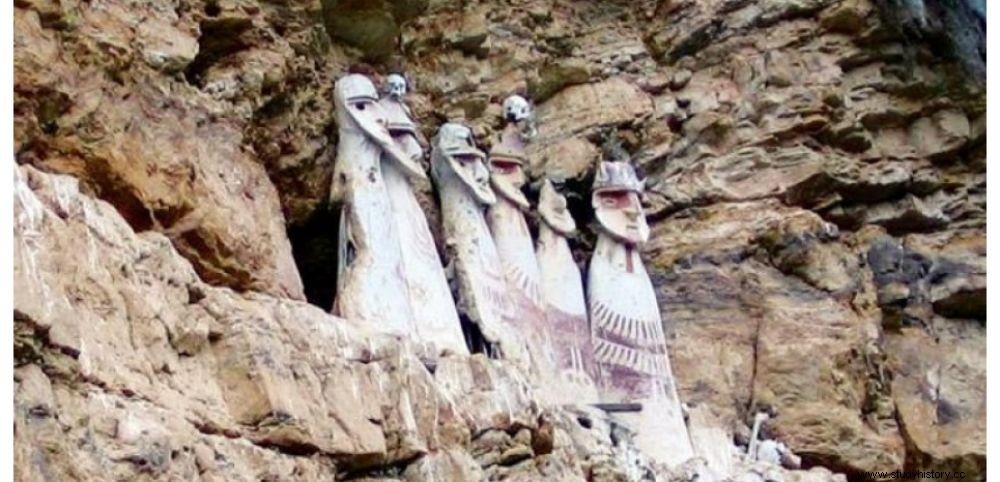 35 new sarcophagi of the Chachapoyas Indians have been discovered in the Peruvian Amazon.
35 new sarcophagi of the Chachapoyas Indians have been discovered in the Peruvian Amazon. In the deep forests of the Peruvian Amazon, 35 sarcophagi belonging to the Chachapoyas culture (700 to 1500 AD) were recently discovered (during the year 2013, editor's note) by young villagers. "These 35 coffins were seen in a cliff by a group of people who were circulating on the El Tigre massif in the province of Bongará ", declared Manuel Cabanas, director of the tourism department of the region. Made in July 2013, these discoveries were not revealed until the end of November to better protect the sanctuary against possible looters, the huaqueros .
An amateur video made by the discoverers of the sarcophagi.
INACCESSIBLE. According to the specialists who have been able to examine them, these sarcophagi contain the remains of children belonging to the Chachapoyas culture, better known as the "People of the clouds". About 70 cm high, these sarcophagi look like large wooden masks and contain fardos, "burial bundles" that protect the mummies. As often in this culture, the sarcophagi were placed in the natural cavities of an inaccessible cliff.
Conquered by the Incas
The Chachapoyas have left numerous remains, including the impressive fortress of Kuelap, on Cerro Barreta, at 3000 meters above sea level, in northern Peru. For a long time, the existence of this population remained hidden in the misty recesses of history, probably protected by the high cliffs of the high forests in which they lived. It owes its name to the Incas who were also their conquerors. In the 15th century, the Quechua name for them was Chacha puyu , which later became Chachapoyas.
Living in a vast territory corresponding to the current departments of Amazonas, San Martin and Libertad, the Chachapoyas evolved between two worlds:that of the high civilizations of the Cordillera (Huari, Mochica) and that of the Amazonian tribes of the great forest. These warriors, united in a large confederation, are mentioned for the first time in Spanish chronicles in the 16th and 17th century, in particular in texts by Huaman Poma de Ayala, before falling into oblivion for more than three centuries.
NECROPOLIS. It was not until 1843 that the great fortress of Kuelap with its twenty-meter-high walls was seen by the Peruvian don Juan Chrisostomo Niéto. Foreign travelers like the French Charles Wiener or Louis Langlois will follow in his footsteps and will also participate in the rediscovery of these remains. Many sites have been updated in recent years, in particular these incredible necropolises located on the side of cliffs. In 1976, archaeologists had notably exhumed earthen sarcophagi, reinforced with wooden frames, more than 2m high on the site of Karajia in the Utcubamba valley. Others are probably still hidden… above the clouds.
Bernadette Arnaud with AFP
READ ALSO.
The Incas practiced surgery without a scalpel. In the 16th century, the practice of ritual cannibalism and human sacrifice provided the Incas with unparalleled surgical knowledge.
